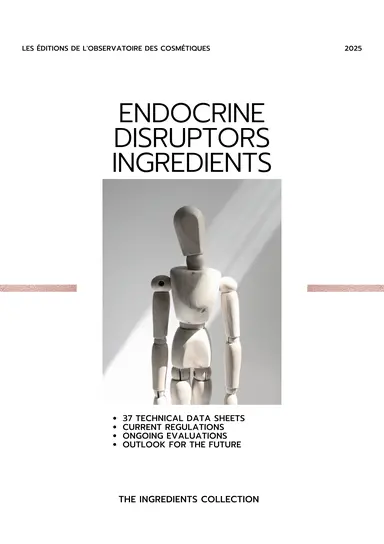In its Article 15 dedicated to CMRs, Cosmetics Regulation 1223/2009 devotes a paragraph to endocrine disruptors, which provides that: “When Community or internationally agreed criteria for identifying substances with endocrine-disrupting properties are available, or at the latest on 11 January 2015, the Commission shall review this Regulation with regard to substances with endocrine-disrupting properties.”
The criteria for identifying endocrine disruptors were defined far after the 2015 deadline, exactly in November 2017 for biocides and in April 2018 for plant protection products.
Even if they do not apply specifically to cosmetic products, these criteria are still “criteria agreed by the Community for the identification of substances with endocrine disrupting properties”, and according to Article 15, the Commission should have revised the Cosmetics Regulation on this basis.
Instead, the Commission has reviewed how substances considered as potential endocrine disruptors have so far been treated under the Regulation, i.e. either banned or limited on a case-by-case basis after their safety assessment by the SCCS, or covered by the REACH Regulation or the provisions of Article 15 of the Cosmetic Regulation on CMRs. And concluded, in a report published on 7 November 2018, that “the cosmetic regulation provides the adequate tools to regulate the use of cosmetic substances that present a potential risk for human health.”
However, the Commission also undertook to establish a priority list of potential endocrine disruptors that were not already covered by the prohibitions provided for in the Cosmetics Regulation for the assessment of their risks.
A list of 28 substances was established and divided into two groups:
• Group A consists of 14 substances that should be treated with higher priority for assessment as they are undergoing substance evaluation (SEV) under REACH for ED concerns or the SEV has already confirmed ED concerns
• Group B consists of 14 substances where either no SEV has been initiated or the outcome of the SEV is of an environmental ED concern and not a human health one, or that have recently been evaluated by the SCCS
Group A substances were the subject of a call for data launched on 16 May 2019 by the Commission, with the aim of gathering sufficient information before their evaluation by the SCCS. The European Commission has announced that a second call for data related to the 14 substances found in Group B will take place “in the future.”
This means that 28 cosmetic ingredients are already in regulatory status pending an ongoing or future assessment.
And substances that have been included in the CoRAP (Community Rolling Action Plan), the chemical evaluation programme under the REACH Regulation, for their potential as endocrine disruptors, should be added.
As well as those listed by the work of IPCP (International Expert Group on Chemical Pollution) initiated by the UN.
All these sources were the basis for the selection of ingredients in this ebook. They have been arranged here in alphabetical order. For each of them, CosmeticOBs presents the reasons why they are targeted, the current regulations applicable to them, the timetable for their evaluation…. In a way, the essential points to know before deciding whether or not to use and/or substitute them in the formulation of a product.
The author
A graduate of the School of Journalism in Lille, Laurence Wittner is a freelance journalist specializing in the field of cosmetics. Co-founder of Monitor Cosmetics, she is the editor-in-chief of its supports.
Ebook 2025 “Endocrine Disruptors Ingredients”, english version, L’Observatoire des Cosmétiques’ edition (last update: January 2025), 149 pages (ISBN : 979-10-92544-51-0), PDF format (2 Mo).


